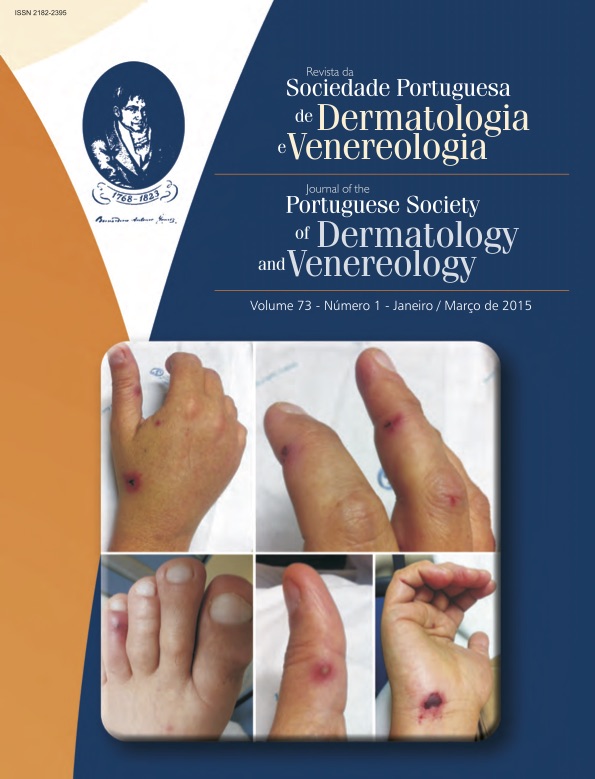ALLERGIC CONTACT DERMATITIS TO ARTHROPLASTIES - A RARITY OR A SUBDIAGNOSED ENTITY?
Abstract
Introduction: Allergic contact dermatitis to the constituents of the prosthesis occurs in 5% of patients and may be the etiology of the failure of arthroplasty. The most common sensitizer’s metals are nickel, cobalt and chromium. The components of the cement have also been implicated as allergens.
Methods: A retrospective study of patients with arthroplasties, who performed patch tests, after suspicion of allergic contact dermatitis in the last 2 years was done. We carried out tests with the standard battery of the Portuguese Group for the Study of Contact dermatitis and supplemental batteries, including metals, acrylates/methacrylates and topical antibiotics.
Results: Fourteen patients were included: 10 underwent knee arthroplasty, 3 hip arthroplasty and 1 ankle arthroplasty. Patients had limited function of joints. The mean age of patients observed was 61.6 years and 12 patients were females and 2 males. The symptoms appeared on average 14.4 months after surgery. Nine patients had positive reactions to nickel, 5 to cobalt, 1 to chromium, 1 to gentamicin and neomycin. In these cases we opted for placing the prosthesis revision with oxinium and/or titanium, with improvement of symptomatology.
Discussion and conclusions: This review showed the importance of performing patch tests in patients with clinical signs of failure of arthroplasty, since patients with sensitization to its constituent improved with the replacement of prosthesis.
Downloads
References
Henrique M. Reacções alérgicas a implantes ortopédicos. Bol Inform GPEDC. SPDV. 2012; 70: 7-12.
Granchi D, Cenni E, Tigani D, Trisolino G, Baldini N, Giunti A. Sensitivity to implant materials in patients with total knee arthroplasties. Biomaterials. 2008;29(10):1494-500.
Gawkrodger DJ. Metal sensitivities and orthopaedic implants revisited: the potential for metal allergy with the new metal-on-metal joint prostheses. Br J Dermatol. 2003; 148(6):1089-93.
Cousen PJ, Gawkrodger DJ. Metal allergy and second-generation metal-on-metal arthroplasties. Contact Dermatitis. 2012; 66(2):55-62.
Basko-Plluska JL, Thyssen JP, Schalock PC. Cutaneous and systemic hypersensitivity reactions to metallic implants. Dermatitis. 2011; 22(2):65-79.
Hallab N, Merritt K, Jacobs JJ. Metal sensitivity in patients with orthopaedic implants. J Bone Joint Surg Am. 2001; 83:428-36.
Sckalock PC, Menné T, Johansen JD, Taylor JS, Maibach HI, Lidén C, et al. Hypersensitivity reactions to metallic implants-diagnostic algorithm and suggested patch test series for clinical use. Contact Dermatitis, 2012; 66 (1): 4-19.
All articles in this journal are Open Access under the Creative Commons Attribution-NonCommercial 4.0 International License (CC BY-NC 4.0).








